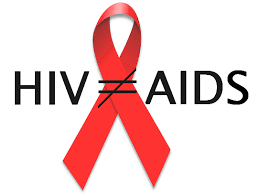(Paris, France) – More than 6,000 HIV professionals from around the world have gathered in Paris for the 9th IAS Conference on HIV Science (IAS 2017), the world’s largest open scientific meeting on HIV. The four-day conference is organized by the International AIDS Society (IAS) in partnership with the French National Agency for Research on AIDS and Viral Hepatitis (ANRS).
The IAS 2017 programme includes 1,700 scientific abstracts and dozens of satellite sessions addressing every aspect of HIV research. The conference will prioritize basic science, a prerequisite step to ending the HIV epidemic. The meeting will also feature studies that shine a light on the specific needs of key populations, including young people, transgender people, men who have sex with men, sex workers and people who inject drugs.
“Science is the reason we’ve made such remarkable progress in the fight against HIV, and applied science is what will bring this epidemic to an end,” Linda-Gail Bekker, the President of the International AIDS Society (IAS) and International Scientific Chair of IAS 2017, said. “While HIV research has already delivered major advances that have saved millions of lives, we still have much more to know and discover, especially a vaccine and a cure.”
“Each study opens new doors, closes others and narrows our focus,” Jean-François Delfraissy, the IAS 2017 Local Scientific Chair and former director of ANRS, said. “The collective power of the cutting-edge research that will be presented at IAS 2017 will take us a giant step forward in getting to the end of HIV.”
Several global HIV leaders joined Linda-Gail Bekker and Jean-François Delfraissy in the conference’s official opening press briefing today, including Ambassador Deborah Birx, the US Global AIDS Coordinator and Director of the PEPFAR programme, who detailed PEPFAR’s record of success and outlined the programme’s future priorities; Giovanna Rincon, the President of the ACCEPTESS-T association, who called for greater visibility and acceptance of transgender people in HIV policies and programmes, and issued a plea to scientists to prioritize vulnerable populations in their research; and Michel Sidibé, the Executive Director of UNAIDS, who shared recently released data on the state of the global HIV epidemic, and provided perspective on progress toward achieving the “90-90-90” global targets.
This year’s conference takes place at an uncertain time for global HIV funding, particularly in light of proposed cuts by the United States, the largest donor in the world’s HIV response. If enacted, the funding cuts would devastate HIV research and treatment programmes, stalling or undoing recent progress.
